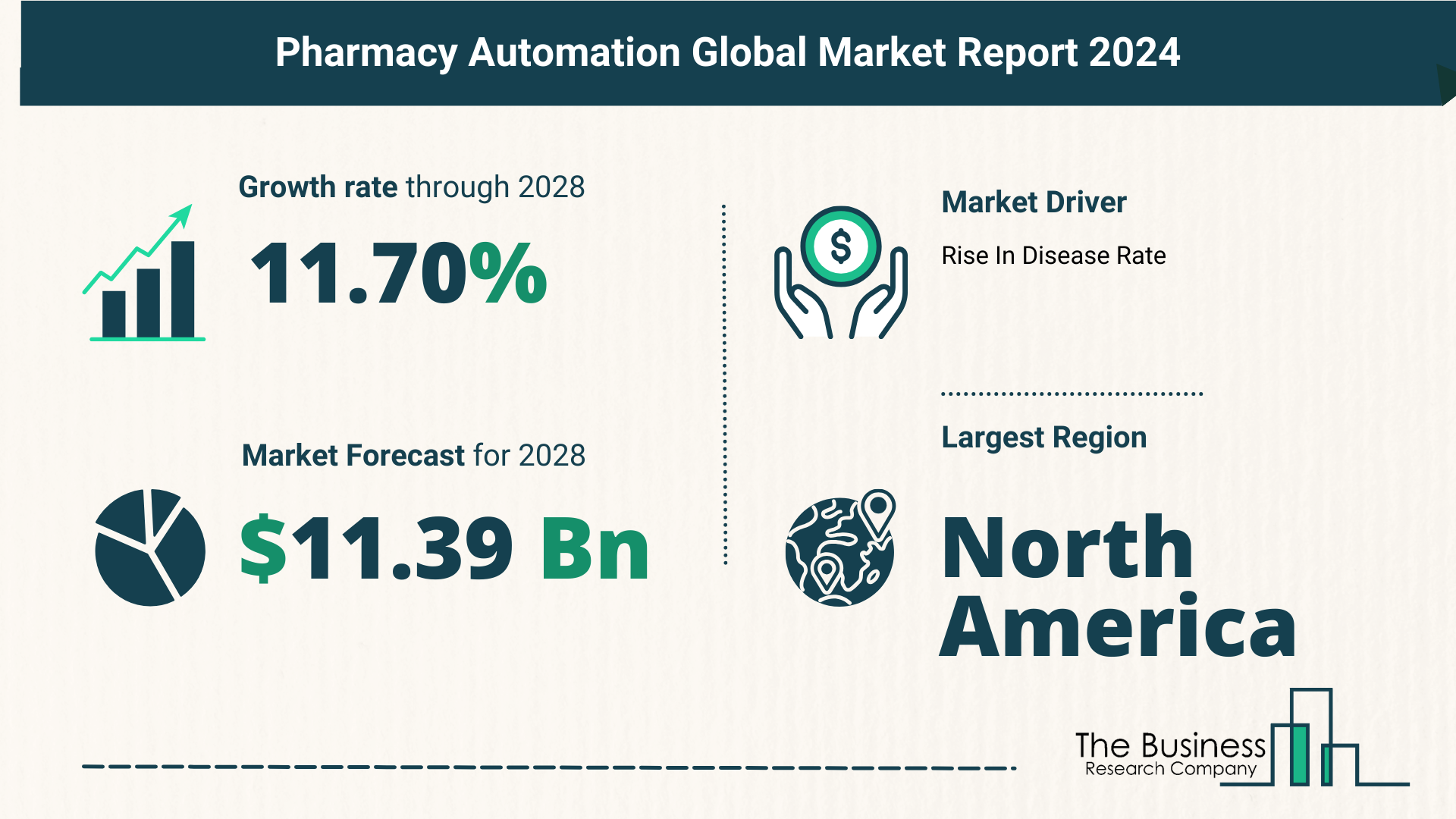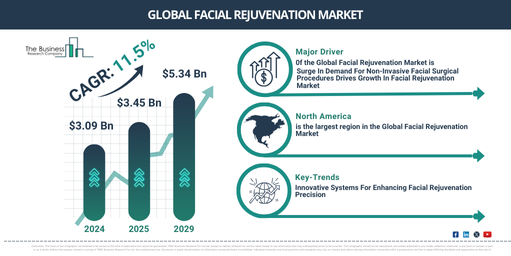What Is The Forecast Growth Rate For The Pharmacy Automation Market?
The Business Research Company’s market reports offer an in-depth analysis on the market’s growth potential, major drivers, key trends and more.
The pharmacy automation market has experienced significant growth in recent years, driven by several key factors.
- Historic Growth and Market Size
- The market size grew from $6.58 billion in 2023 to $7.32 billion in 2024, with a CAGR of 11.2%.
- Factors contributing to historic growth: shortage of skilled pharmacy staff, stringent regulations, need to reduce medication errors, enhanced data management, and patient demand for faster service.
- Forecasted Growth and Trends
- Expected to reach $11.39 billion by 2028, growing at a CAGR of 11.7%.
- Forecasted drivers: aging populations, growth of retail pharmacy chains, focus on patient experience, rising labor costs, and integration with EHR systems.
- Major trends: AI-powered systems, telepharmacy solutions, robotics, centralized prescription processing, and blockchain adoption.
Read More On The Pharmacy Automation Market Report 2024 – https://www.thebusinessresearchcompany.com/report/pharmacy-automation-global-market-report
Rise In Disease Rate Is Anticipated To Fuel The Expansion Of The Pharmacy Automation Market
The surge in disease rates globally is expected to drive further growth in the pharmacy automation market.
- Impact of Disease Rates
- Factors contributing: increasing population, travel, climate change, pollution, and new infectious agents.
- Pharmacy automation’s role: enhances accuracy and efficiency in medication dispensing and management.
- Example: US projected to see a significant increase in chronic conditions among older adults by 2050.
Major Companies and Innovations
Leading companies and innovations are shaping the pharmacy automation landscape.
- Key Players
- Major companies include Mckesson Corporation, AmerisourceBergen Corporation, Baxter International Inc., and more.
- Focus on expanding product portfolios and innovation in automated drug dispensing systems.
- Innovative Solutions
- Example: JVM Co. Ltd.’s MENITH, a robotic arm-based automated dispensing machine, improves dispensing speed and accuracy.
- Advanced systems aim to reduce medical errors and optimize pharmacy workflows.
Strategic Acquisitions and Market Segmentation
Strategic moves and market segmentation play crucial roles in market expansion.
- Strategic Acquisition
- Example: Becton, Dickinson, and Company’s acquisition of Parata Systems enhances automation solutions.
- Focus on addressing pharmacy challenges and enhancing clinical efficiencies.
- Market Segmentation
- Segmented by product (dispensing systems, packaging machines), application (drug dispensing, inventory management), and end-user (inpatient pharmacies, retail pharmacies).
Regional Insights
Regional dynamics highlight growth disparities and opportunities.
- Regional Insights
- North America led the market in 2023; Asia-Pacific expected to grow fastest.
- Regional growth driven by healthcare infrastructure development and increasing healthcare spending.
In conclusion, the pharmacy automation market is poised for substantial growth driven by technological advancements, rising healthcare demands, and strategic industry moves. As the healthcare landscape evolves, pharmacy automation will continue to play a pivotal role in enhancing patient care and operational efficiencies across global healthcare systems.
Request for A Sample Of The Global Pharmacy Automation Market Report:
https://www.thebusinessresearchcompany.com/sample_request?id=15234&type=smp



